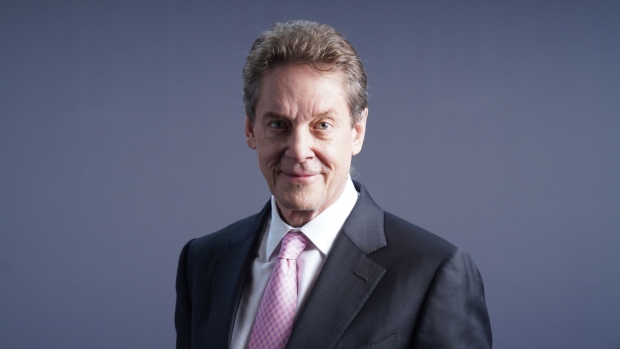Feb 9, 2023
Billionaire Friedland Weighs Strategic Partner for Congo Copper
, Bloomberg News

(Bloomberg) -- Ivanhoe Mines Ltd. founder Robert Friedland said he may bring in a minority partner to help develop Congolese copper assets that are key to the green energy transition.
The Vancouver-based company is in discussions with potential partners, including sovereign investors, as countries seek stable supplies of the metal, Friedland said. But Ivanhoe will only enter partnerships that bolster the growth plans of its flagship Kamoa-Kakula mine in the copper-rich Democratic Republic of Congo, the billionaire said.
“We’re in all kinds of strategic discussions and you know, most of the most interesting investors tend to be sovereign investors,” Friedland said in Bloomberg’s Cape Town office on Wednesday. “We only want to do things that help it to grow.”
BHP Group held early stage discussions with Ivanhoe to buy into Western Foreland, a huge exploration territory that neighbors the Kamoa-Kakula mine, Bloomberg reported in 2021. Congo has some of world’s richest deposits of copper and is the biggest supplier of cobalt, a key battery metal mined alongside it.
Congo is Africa’s largest copper producer, with annual output of 2.4 million tons. Still, investment has lagged behind demand as financiers shied away from projects in the conflict-ridden nation.
Friedland, who is the executive co-chairman of Ivanhoe, made his fortune from a Canadian nickel project and was behind a massive copper-gold discovery in Mongolia that’s now operated by Rio Tinto Group.
While bigger miners need to see a “successful example,” they also need to understand how to work with African nations and their people if they want to secure metal supplies, he said. Major producers “could be valuable as strategic minority shareholders,” according to Friedland.
“So, some form of strategic cooperation, yes,” Friedland said. “But an outright sale? Its extremely unlikely.”
The Kamoa-Kakula venture with partners Zijin Mining Group Co. and the Congolese government, could be one of the world’s largest copper mines. It could also be one of the greenest, according to Friedland, with the copper processed using hydropower rather than electricity generated from fossil fuels. The operation started producing in 2021 and output could reach about 600,000 tons by end of 2024.
Ivanhoe is not the only company looking to expand in Congo. Benedikt Sobotka, chief executive officer of Eurasian Resources Group, said on Tuesday that his company will spend $1.8 billion to double its copper and cobalt production across the central African copperbelt region. Glencore Plc owns assets in Congo as do a number of other major mining companies.
Surging demand and the challenges producers are facing elsewhere means the world will increasingly turn toward the copperbelt region that straddles Congo and Zambia, Friedland said.
Producers in Chile, the world’s top supplier, are grappling with setbacks including declining ore grades, project delays and water supply problems. First Quantum Minerals Ltd.’s Cobre Panama project is mired in a dispute over taxes with Panama’s government. Supplies from Peru, the world’s second-largest producer, have also been threatened by protests. Friedland said Latin America is “uninvestable” for copper companies.
Investors need to spend more to extract the metals from Africa, or “there is no hope for the energy transition,” he said. While Chile has great mines, their grades are declining, pushing up costs, Friedland added. The importance of the metal is such that it’s “ludicrous” the US government hasn’t added copper to its list of critical metals, he said.
“Chile cannot grow their production for the new economy, they just can’t,” Friedland said. “Unless this is completely reinvented, there is no hope for an energy transition.”
--With assistance from Jennifer Zabasajja.
©2023 Bloomberg L.P.





